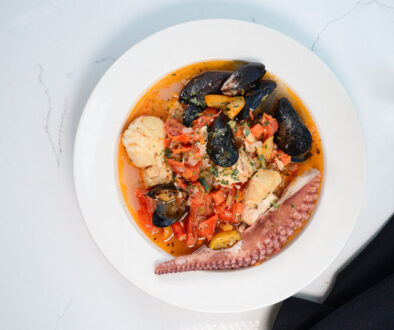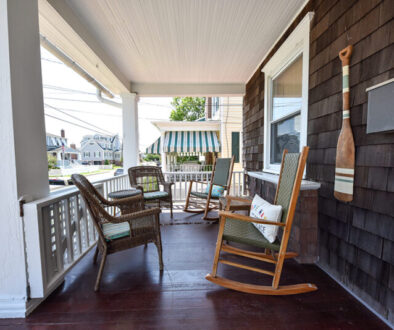Fall Again

I don’t know how it was for you, but this summer seemed to creep up on me, with a cool start that favored spinach and lettuce plantings (which I totally missed because of previous experiences with hot-as-Hades springs of late), followed by the blast furnace of July into August. It was filled with live music, tomato sandwiches, visits from friends, and throngs of seasonal human migrants making their annual pilgrimage to this gorgeous little seaside resort town. My oldest got their first summer job, and my youngest found greater autonomy biking to the beach with only their peers. Summer is magical in Cape May, but it seems to pass faster each year. It’s fall again, for chrissakes. But please don’t misinterpret my intention with that statement.
Fall is the best season in Cape May.
Whether you agree (yet), or not, I imagine you may have heard that Cape May sits at the tip of a “funnel”, of sorts, which results in something incredibly special here each year. The funnel is part physical, bound by the Atlantic to our east, and part climatic, a result of the cold fronts which flow from west to east across our region. As these fronts move east, they bring with them cooler and drier northwest winds which many species use to their advantage when heading south for the winter. Therefore, the western edge of this funnel is actually the backside of the cold front itself, and as it conveys masses of birds, bats, and bugs out of the boreal forests of Canada and down the coast, they concentrate at our little Cape May peninsula, and create a spectacle that, on a good day, rivals any other place in the world for both diversity and density of migrants.
Fall is the best season in Cape May.
Yes, we have thousands of human migrants here on any given day in the summer; but in the fall, we can experience tens of thousands of individual birds in a few early morning hours from a single count site at Higbee Beach. And we will see estimates of over a million Monarch butterflies that have been tallied on a single day departing from Cape May Point to Delaware across the bay and destined for Mexico. If you’re looking to witness a spectacle, look no further than Cape May during the months of September and October.
The primary driver for southbound migration can almost certainly be boiled down to food availability. As winter sets in to our north, resources for insectivorous and nectarivorous species become scarce, and one of the most common evolutionary responses appears to be migration to places where resources are more readily available throughout the harshest months. So, while we can easily see the hawks, falcons, and eagles soaring above during the day, they are literally the top of the food chain and represent the smallest collective number of organisms in this great southbound migration. Making up the greatest biomass are the millions of smaller birds, bats, and insects, many of which migrated overnight, hundreds to thousands of feet above, when the air is more stable, and aerial predators (like the raptors) are sleeping quietly in the trees below.

But by day these interactions do become evident, as in the morning after a good cold front you can witness thousands of songbirds seeking shelter, food, and water throughout the Cape May Peninsula, while attempting to avoid the predatory gaze of a hungry Sharp-shinned Hawk or Merlin falcon. While it’s rare to see bats in densities anywhere near that of birds, it is not uncommon, if you spend enough time, to see one coming in off the Delaware Bay, clearly finding itself over water at daybreak and heading back to shore to roost in one of the black pines in the dunes, or a sassafras tree in the Cape May Point State Park. There’s no doubt that for each one you see, there are many more you don’t, which is further supported by the number of bats that emerge, seemingly from the ether, just before dark, and head out to feed over the South Cape May Meadows.
Many species of insects are considered migratory and it’s not uncommon to see large numbers of southbound migrant dragonflies and butterflies following the passage of the front. Some of the most spectacular examples early in the fall are the migration of Darners (our largest dragonflies) which can be seen streaming overhead at the Hawkwatch platform at the Cape May Point State Park, so much so that it can be confusing when you’re scanning the heavens for hawks only to find yourself identifying dragonflies instead. October is Monarch butterfly season, and Cape May is home to the longest running Monarch monitoring project for very good reason: we have the “funnel” to get them here, but also the food resources (plenty of flowering plants and their host plant, various Milkweed species) and the microclimate and habitat for them to stopover before continuing their journey south, ultimately to the mountains of Northern Mexico.
I could go on and on, but there are books dedicated to this topic and I will never do it justice in a small column, so I leave you with this challenge: pay attention to the passing of cold fronts in Cape May, especially during the fall. Go for a walk at one of the many wonderful natural areas in our area, or better yet, sign up for one of the many guided walks through New Jersey Audubon’s Cape May Bird Observatory, led by amazing volunteers who really know their stuff and who love to share. Get out early on a day when that cool dry air from the northwest has come in overnight and bear witness to one of the most spectacular miracles of our little seaside hamlet. The cost of admission is simply the energy it takes for you to walk outside, open your ears and eyes, and take it all in.
You might just find that fall is your favorite Cape May season now, too.



